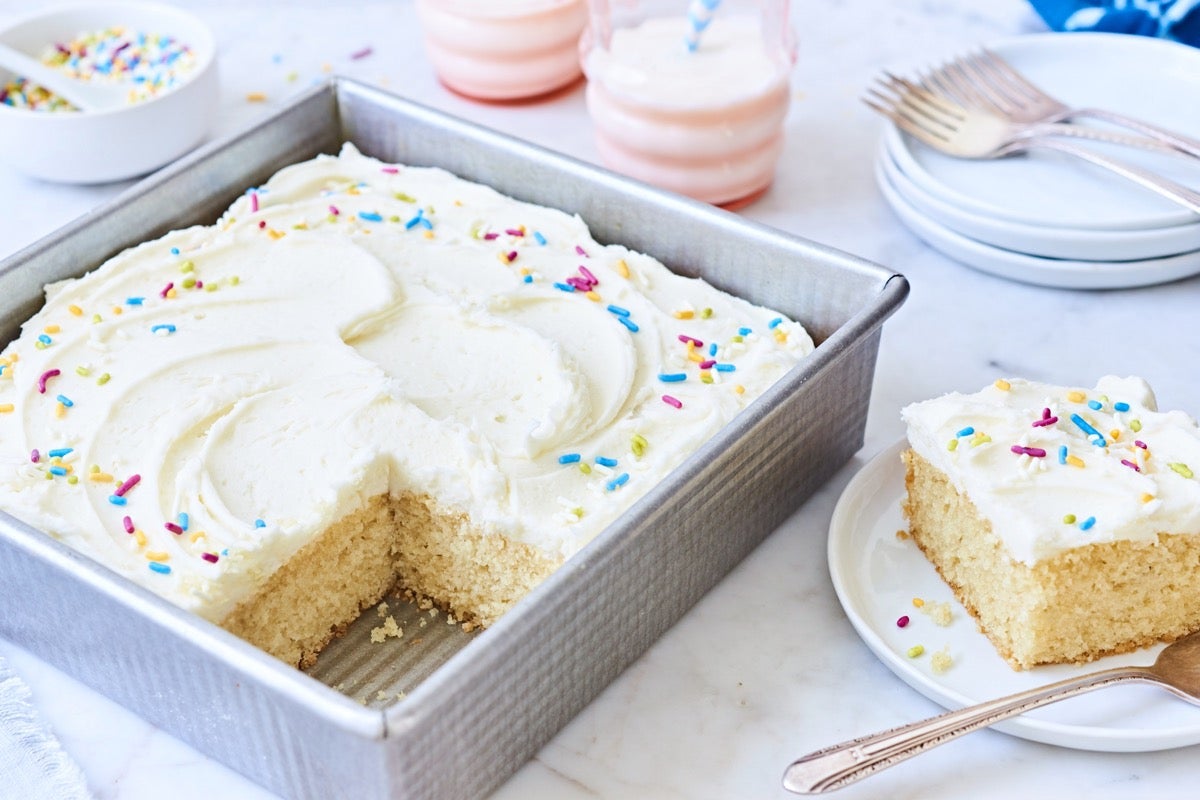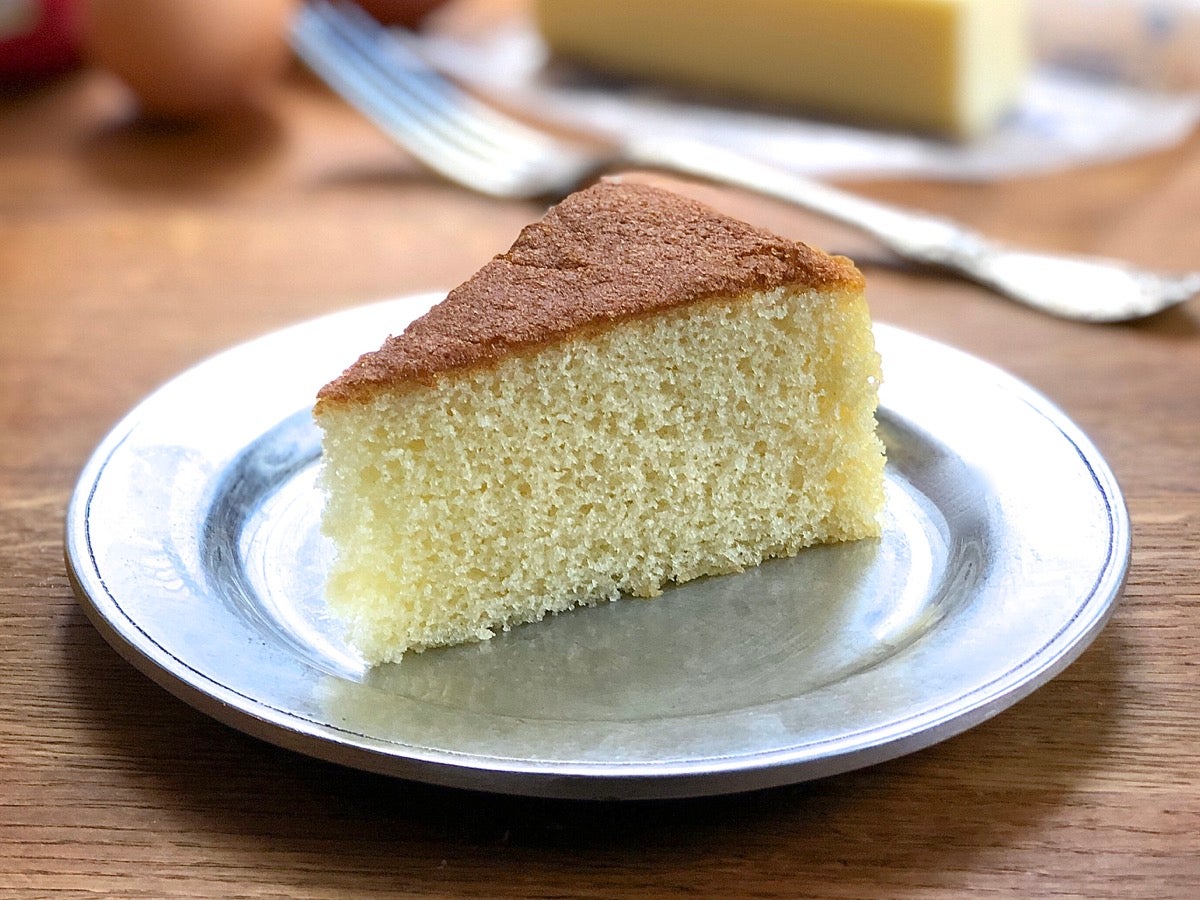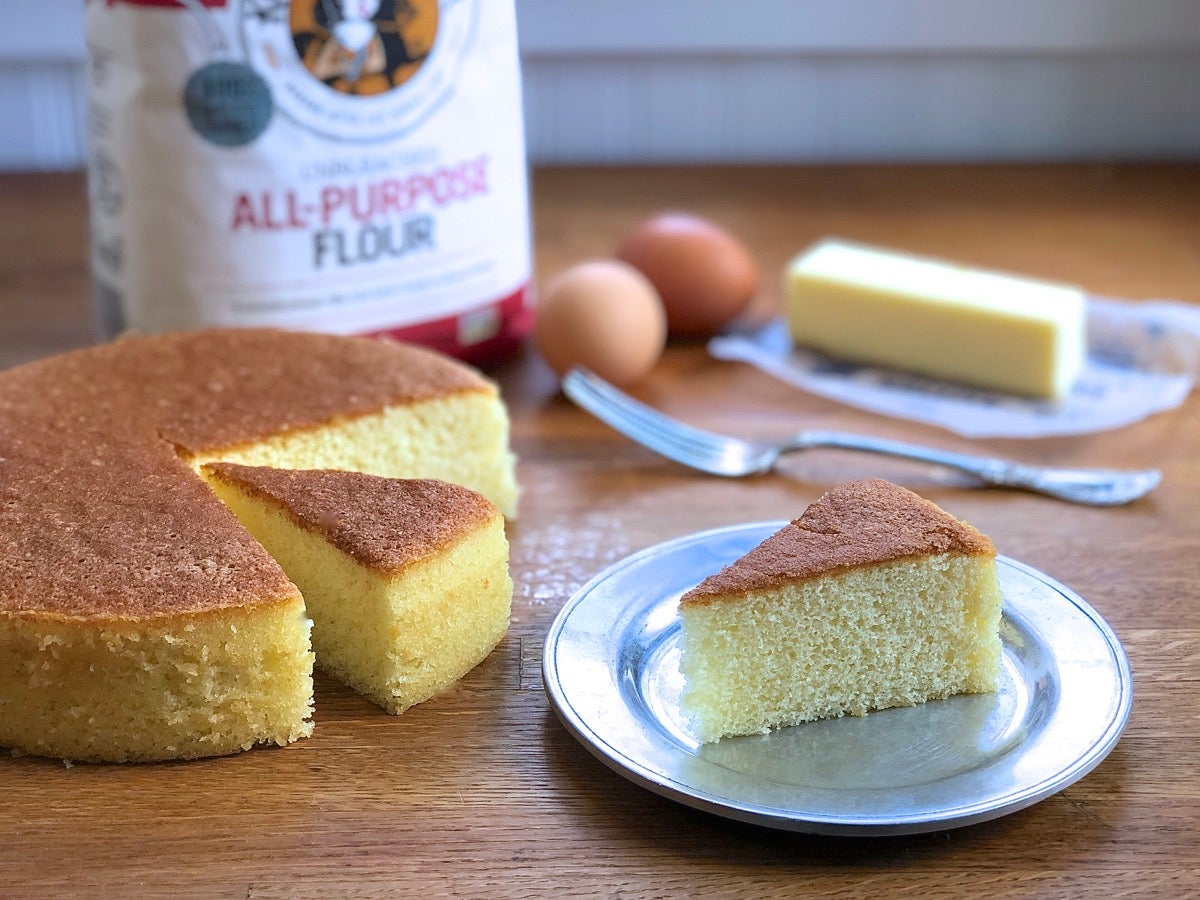


What’s the secret to baking a light-textured, high-rising cake? First, let’s make that “secrets:” there’s no silver-bullet ingredient or technique that will guarantee you a light cake every time. Instead, knowing how to bake high-rising cakes depends both on the recipes and the mixing tools you choose.
Cakes range in texture from cloud-like (angel food) to hearty (carrot cake), with many stops in between. By reading a recipe to identify how the ingredients are put together (stirred vs. beaten; all at once vs. in stages) you can predict pretty reliably what texture your cake will have.

Broadly speaking, cakes that call for ingredients to be quickly stirred together will be denser and heartier than those calling for significant periods of high-speed beating, which result in a lighter cake. The same goes for cakes that call for vegetable oil instead of butter or shortening; expect them to be more substantial.
And that’s just fine; simple stir-together cakes like Old-Fashioned Apple Cake and Vanilla Cake Pan Cake (pictured above) are deliciously moist and flavorful.
At the other end of the scale are cakes that call for beating ingredients separately before combining (e.g., creaming butter with sugar, or whipping egg whites). These cakes tend to be on the lighter side. Plus, if cake flour is in your recipe's list of ingredients, expect a finer-grained, more delicate cake.
Coconut Cake falls into this category; the butter and sugar are beaten together until “extremely light and fluffy," giving the cake a tender crumb and delicate texture.

Ditto Lemon-Glazed Pound Cake (“When done, the batter will be very fluffy“). When you see the word “fluffy” applied to batter texture, you can assume your cake will be light and somewhat delicate rather than dense and hearty.
So you’ve found a recipe and determined it should result in a lighter-textured cake. How do you ensure your batter is “fluffy”?
Use the right tool(s) for the job.

Many cake recipes call for you to begin by “creaming” butter and sugar together. This simply means beating room-temperature butter with sugar until aerated, Beating generates thousands of tiny bubbles, which translate to a light texture in your baked cake.
When successfully creamed, butter and sugar will be smooth and will have lightened in color to a pale yellow. Don’t be tempted to beat past this point; over-creaming can release all of those hard-won bubbles. For details on mastering this technique, see our blog post, Creaming butter and sugar.
While bakers used to cream butter and sugar with a wooden spoon, these days most of us use an electric mixer. Most mixers come with both flat beater and whisk attachments; which is best for creaming butter and sugar?

The flat beater. Solid butter mixed with sugar is quite stiff, and you need the strength of your flat beater to handle it.

While you may initially think of a whisk as the best tool for adding air to batter, when confronted with butter and sugar its thin wires quickly become clogged. Eventually a whisk will cream butter and sugar but it takes a while, along with you constantly having to scrape and clean the wires. Best not to go there; use the flat beater for creaming butter and sugar.

Another technique for creating fluffy batter is to beat eggs — just the whites, just the yolks, or whole eggs — with the sugar in the recipe.
Foam cake (e.g. angel food cake) gets its distinctive extra-light texture from egg whites and sugar whipped into a meringue. Likewise, sponge cake’s airy, “spongy” texture comes from beating whites with sugar and yolks with sugar (each until fluffy), then gently folding the two together. Neither of these cakes includes any chemical leavener, so it’s imperative that their component parts be thoroughly beaten; air alone is responsible for making these cakes rise.

Chiffon cake, a variation on sponge cake, usually calls for whole eggs and sugar to be beaten until fluffy. A typical chiffon cake like our Classic Birthday Cake (above, without its frosting) includes baking powder or baking soda, so while it doesn’t rely 100% on your beating prowess to rise, beating eggs to their fluffiest is still important.
And which mixer attachment is best for beating sugar with eggs — yolks, whites, or whole eggs?

The whisk. Eggs are much more fluid than solid butter, and the thin wires of a whisk do a great job whipping air into the egg/sugar matrix.
What if you don’t have a whisk attachment — can you use the flat beater instead? Or in the case of an electric hand mixer, the dual beaters?
Absolutely. You’ll just have to beat longer to achieve that super-light consistency. In my experience, it takes about twice as long at medium-high speed (speed 6 on my KitchenAid Pro) to beat eggs and sugar to optimal fluffiness using the flat beater instead of the whisk.

Your recipe should give you various cues around how much to beat eggs and sugar. For instance, Classic Birthday Cake calls for beating whole eggs and sugar "until thickened and light gold in color ... The batter should fall in thick ribbons ..."
In addition, fully beaten eggs and sugar should be a bit bubbly, as well as homogeneous: when you draw a spatula through the creamy mixture at the top, you shouldn't find a viscous layer of sticky syrup at the bottom (as you would with under-beaten eggs and sugar).
What about beating just egg whites with sugar? Our recipe for Sponge Cake with Cranberry Curd calls for beating egg whites and sugar until “the whites are stiff and glossy.”

But watch out: It's quite easy to over-beat egg whites using your mixer's very efficient whisk attachment. And over-beating, especially prior to adding sugar, can cause whites to break down. So if you’re using your whisk, don’t walk away; those whites will be fully beaten more quickly than you’d imagine.

Once you’ve beaten eggs with sugar or creamed butter and sugar (then beaten in the eggs), you're ready to add the remaining ingredients. Which means it's time to ratchet down the speed: you’re finished beating.
Whether you’re making a creamed, foam, sponge, or chiffon cake, your goal is to retain the air you’ve whipped into the batter. You'll want to gently (but thoroughly) stir in leavener, flavors, flour, and liquid: no beating! Not only can beating release air, it’ll activate the gluten in flour, potentially making your cake tough.
My fellow King Arthur baker Susan Reid says your whisk attachment actually does a good job here: "When folding dry ingredients into an egg foam, I will often use the whisk attachment to gently pull the flour through. Many wires integrate the two more quickly than one spatula blade, although I always finish with the spatula at the end."

For light, tender cakes, follow these tips:

I'm not a great cake baker and I don't always follow the rules; no Baking Police, that's my motto. But oh my, when I actually take the time to follow the recipe for our 2019 Recipe of the Year, Classic Birthday Cake — and beat the eggs and sugar fully, as directed — I turn out the best yellow cake ever!
Even though the recipe's frosting is totally scrumptious, I confess I don't always use it. Plenty of times I serve individual layers naked (like the one above), with some berries or a scoop of ice cream.
Or I frost single layers with the vanilla frosting from our Vanilla Cake Pan Cake flavored with maple or lemon or butterscotch: or simply top with our easy Chocolate Ganache. This recipe is a wonderful jumping-off place for all kinds of cake adventures.
So next time you're looking for a really good yellow cake, click on over to our Recipe of the Year. Follow the directions, and I guarantee you'll be wowed!
What kind of cakes do you prefer baking? Tall and fluffy or short and moist? Frosted, glazed, or plain? Let us know in the comments below!